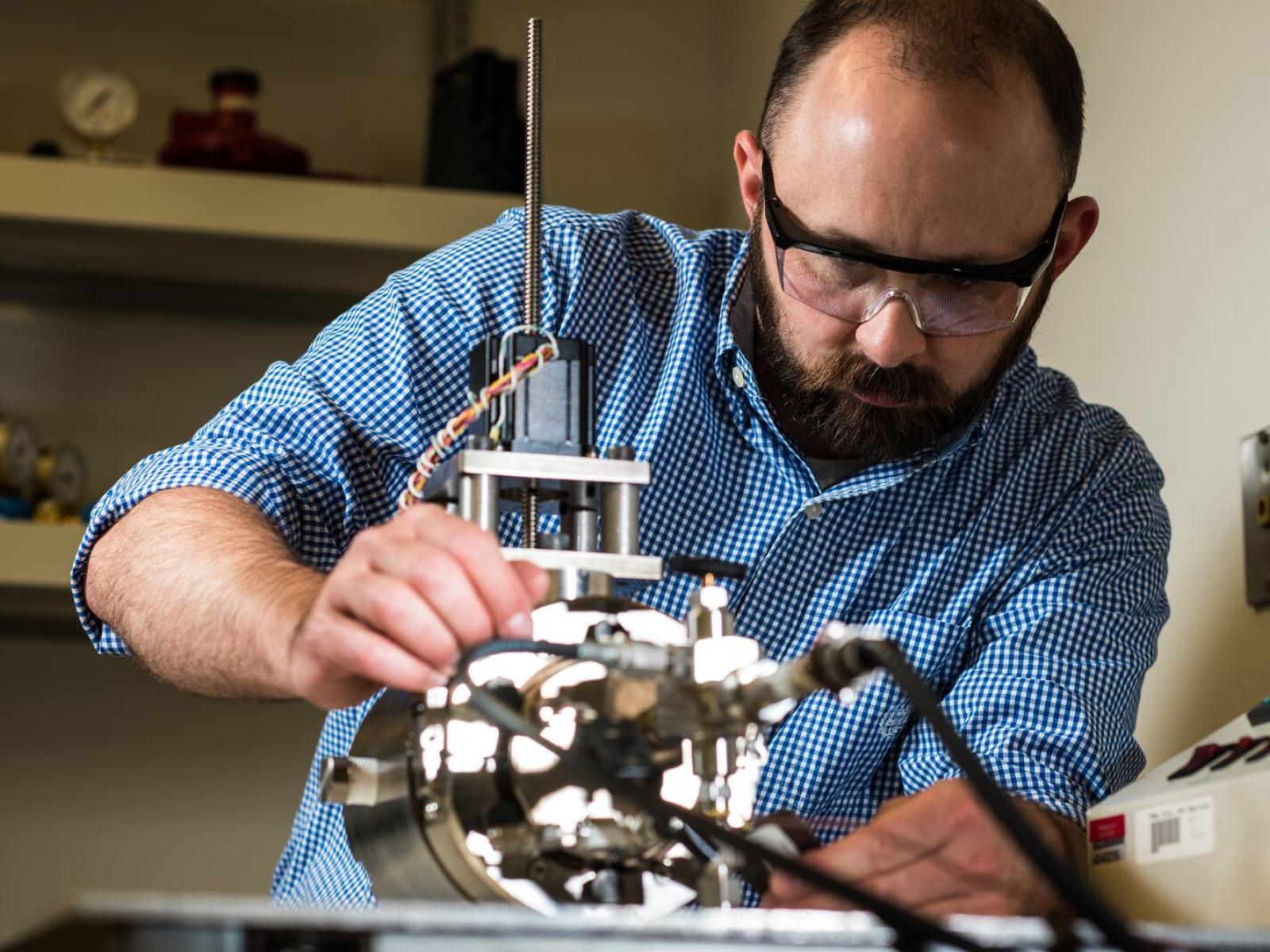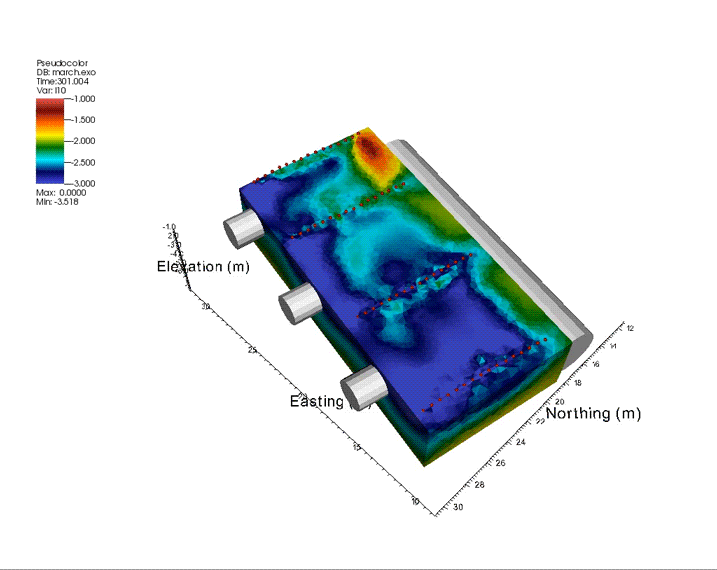Computational and Applied Geophysical and Geomechanics Laboratory
Foundational geophysical and geomechanics science and technology

PNNL Earth Scientist, Jeff Burghardt, making subcritical fracture velocity measurements in the Computational and Applied Geophysical and Geomechanics Laboratory.
(Image by Andrea Starr | Pacific Northwest National Laboratory)

Pacific Northwest National Laboratory’s (PNNL’s) computational and applied geophysical and geomechanics capabilities transcend across missions in fundamental science, sustainable energy, environmental stewardship, and national security. A wide-range of sponsors, from the Department of Energy to the Department of Defense and other federal and private entities, rely on PNNL researchers for modeling subsurface fluid dynamics, predicting the stability of perforation tunnels, designing and monitoring simulation tests, monitoring fluid removal or injects and associated impacts, and more.
PNNL researchers apply their strengths in making and interpreting measurements of Earth’s physical properties to determine subsurface conditions, as well as proficiencies in numerical computations to generate and analyze models of complex geophysical systems. As a result, PNNL is strategically positioned to analyze the response and instability of multi-phase materials numerically and mechanically, for materials including soils, rock, composites or living tissues. In turn, these capabilities underlie PNNL’s high-precision remote and autonomous sensing for interrogating, understanding, predicting, and controlling complex subsurface environmental systems.
Capabilities and Applications
High-performance computing inversion processing represents one capability among many powered by the Computational and Applied Geophysical and Geomechanics Laboratory. This processing enables autonomous, real-time understanding of both natural and extreme subsurface environments. The Computational and Applied Geophysical and Geomechanics Laboratory provides the equipment and space needed by PNNL researchers to perform work that is highly collaborative and multidisciplinary, supporting domain expertise in:
Capabilities |
Applications |
|---|---|
|
|
Impact
PNNL’s foundational geophysical and geomechanics science and technology plays a critical role in technically underpinning decision-making processes that address sponsors’ challenges and needs resulting in significant positive mission impacts.
